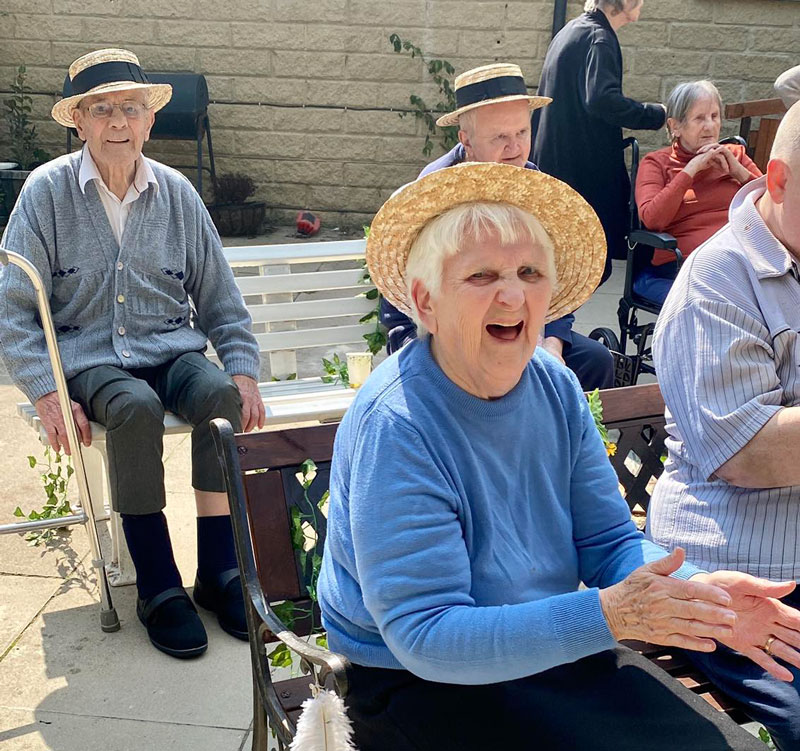
15th October 2025
What Is Respite Care and How Can It Help Families?
What Is Respite Care and How Can It Help Families?
Caring for an elderly loved one is an act of love—but it can also be physically and emotionally demanding. Even the most dedicated caregivers need time to rest, recharge, or attend to personal responsibilities. That’s where respite care comes in—a valuable service designed to offer temporary care and caregiver relief without compromising your loved one’s comfort or safety.
In this article, we’ll explore what respite care is, how it works, and why it’s one of the most beneficial elderly support options for families today.
Understanding Respite Care
Respite care provides short-term, professional care for older adults, allowing family caregivers to take a well-deserved break. It can last for a few hours, several days, or even weeks—depending on your family’s needs.
During a short stay, your loved one receives the same level of attention, support, and compassion as permanent residents in a care home. They benefit from nutritious meals, engaging activities, and 24/7 supervision—all while their primary caregiver enjoys time to rest or manage other commitments.
In Simple Terms:
Respite care = Temporary support for your loved one + Relief for you.
It’s not just a break—it’s a way to sustain long-term caregiving and protect both the caregiver’s and the senior’s wellbeing.
The Purpose of Respite Care
The main goal of respite care is to provide balance and support for families. Caring for someone with complex health needs can be rewarding, but it’s also challenging and time-consuming. Respite services ensure that caregivers can take time off without guilt and with peace of mind knowing their loved one is in safe hands.
Respite Care Serves Two Key Purposes:
- Caregiver Relief – Offering rest and recovery to those providing long-term care.
- Continuity of Elderly Support – Ensuring the older adult’s routine, comfort, and medical needs are still met.
By taking short breaks, caregivers return refreshed, recharged, and better equipped to provide loving, consistent care.
Types of Respite Care Available
Every family’s situation is different, which is why care homes and healthcare providers offer flexible respite options. Here are the most common forms of respite care:
1. Residential Respite Care
Offered in care homes, this option provides full-time support for a fixed duration—such as a few days or weeks. It’s ideal for caregivers going on holiday, recovering from illness, or simply needing rest.
2. Day Care Services
These are short-term daytime programs where seniors participate in social, recreational, and therapeutic activities while caregivers work or take a break.
3. Home-Based Respite Care
Trained professionals come to your home to care for your loved one, helping with daily tasks like medication management, meals, and companionship.
4. Emergency Respite Care
Unexpected events happen—like sudden illness or travel needs. Emergency respite care ensures your loved one receives immediate, professional assistance whenever required.
Each type is designed to offer flexibility, safety, and peace of mind, ensuring the right level of care is available at the right time.
Who Can Benefit from Respite Care?
Respite care is suitable for a wide range of individuals and families. It supports both caregivers and elderly loved ones who may have diverse health or lifestyle needs.
Ideal for:
- Families caring for someone with dementia, Alzheimer’s, or Parkinson’s disease
- Seniors recovering from illness, injury, or surgery
- Caregivers balancing work, family, and care responsibilities
- Elderly individuals who are socially isolated or need companionship
Whether your loved one needs help with daily activities, medication, or just some extra company, respite care ensures they’re well looked after in your absence.
Key Benefits of Respite Care for Families
1. Reduces Caregiver Stress and Burnout
Continuous caregiving can lead to exhaustion and emotional fatigue. Regular breaks through respite care allow caregivers to rest, preventing burnout and improving their long-term ability to provide compassionate care.
2. Provides Social Engagement for the Elderly
During a short stay, seniors can participate in group activities, socialize with peers, and enjoy new experiences—all of which enhance emotional wellbeing and reduce loneliness.
3. Ensures Consistent Professional Care
Even in your absence, your loved one receives round-the-clock attention from trained caregivers. From personal assistance to medical supervision, everything is handled with care and expertise.
4. Supports Recovery and Independence
Many care homes use respite periods to strengthen mobility, improve mental stimulation, and help residents regain independence through structured daily routines and personalized care plans.
5. Builds Confidence for Future Transitions
For families considering long-term care, respite stays provide a gentle introduction. It helps both the family and the elderly person become familiar with the care home environment before committing to a permanent arrangement.
Inside a Typical Respite Stay at a Care Home
At high-quality facilities like Park View Care Home, respite residents enjoy all the same amenities and compassionate services as permanent residents.
A Typical Day Includes:
- Nutritious meals prepared to meet dietary needs
- Personal care assistance (bathing, dressing, grooming)
- Engaging group activities like arts, music, or gentle exercise
- Medical supervision and medication management
- Safe, comfortable accommodations designed for accessibility
- Social time with other residents and caring staff
Every moment is planned to support both physical health and emotional comfort.
How Respite Care Strengthens Family Relationships
When caregivers are well-rested, they’re able to give more love, patience, and attention to their loved ones. Taking breaks also encourages open communication within families—acknowledging that asking for help is not a weakness, but an act of care.
Respite care allows families to:
- Avoid caregiver fatigue and emotional strain
- Spend quality time together without constant care duties
- Maintain healthy boundaries and mutual respect
Ultimately, respite care nurtures stronger, more sustainable family relationships.
Common Myths About Respite Care
Despite its many benefits, some families hesitate to use respite care due to misconceptions. Let’s clear up a few:
- Myth: “It’s only for emergencies.”
Reality: Respite care is available anytime families need temporary relief. - Myth: “My loved one won’t adjust.”
Reality: Most residents adapt quickly to the caring and welcoming environment. - Myth: “It’s only for seniors with health issues.”
Reality: Respite care also supports healthy older adults who simply need companionship or supervision while families are away.
Breaking these myths helps families see respite care as a positive, proactive solution, not a last resort.
Choosing the Right Respite Care Home
When selecting a respite care home, consider the following factors:
- Experience in elderly and dementia care
- Warm, home-like environment
- Qualified staff available 24/7
- Transparent pricing and clear communication
- Positive testimonials from families
Final Thoughts: A Helping Hand for Families
Respite care isn’t just about temporary support—it’s about sustaining long-term wellbeing for both caregivers and loved ones. Whether you need a few days’ rest, are planning a holiday, or





